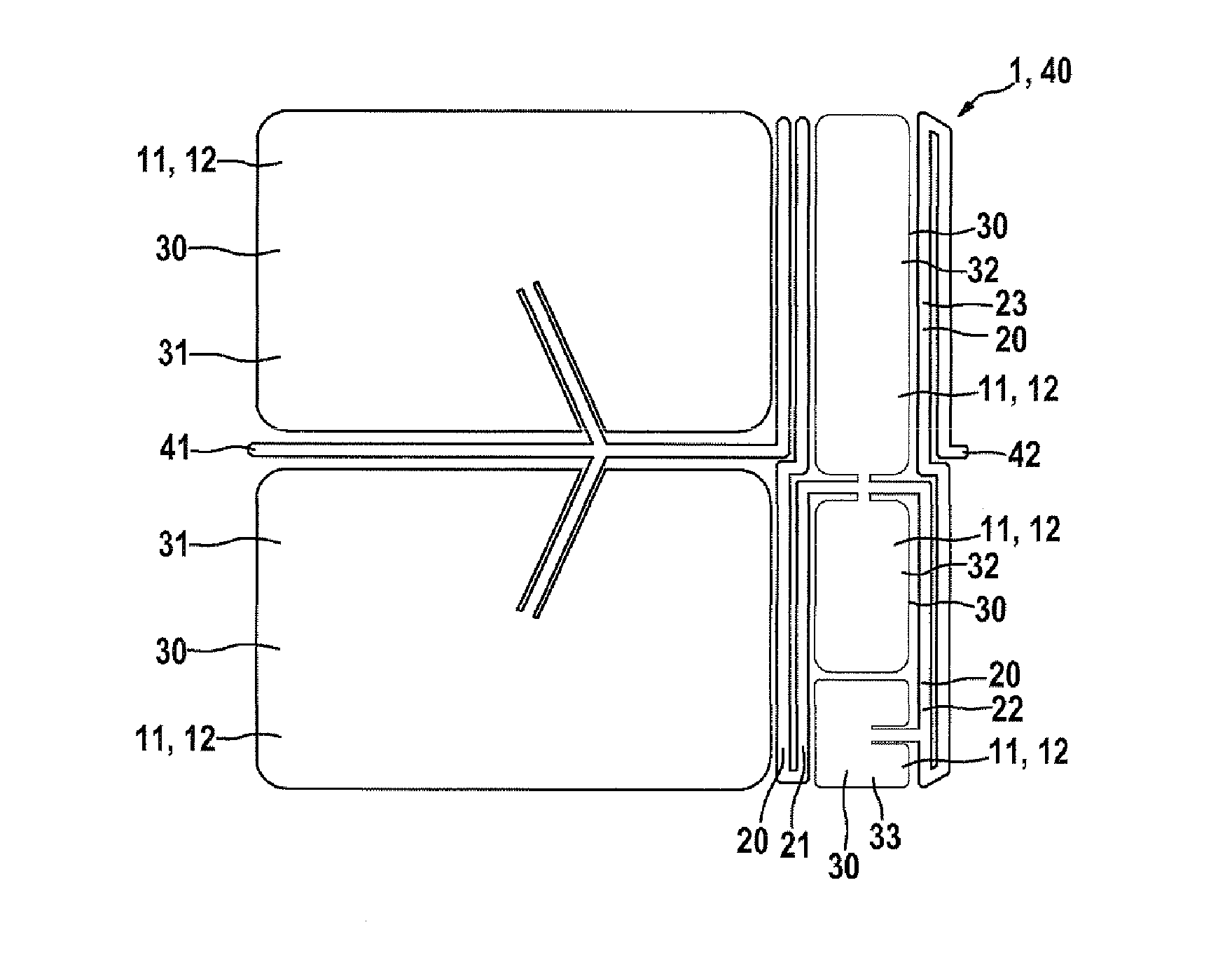Protection device against electromagnetic interference
- Summary
- Abstract
- Description
- Claims
- Application Information
AI Technical Summary
Benefits of technology
Problems solved by technology
Method used
Image
Examples
Embodiment Construction
[0022]FIG. 1 illustrates a plan view of a protection device 1 comprising capacitance and induction structures 30, 20, which forms a protection circuit 40, wherein the capacitance structure 30 is illustrated according to the invention as an embedded component in a printed circuit board. In this view, therefore, only the electrodes 11, 12 of the capacitance structures 30 and the conductor tracks which couple the capacitance structures 30 to one another can be discerned. In this case, the conductor tracks form inductance structures 20. This illustration does not illustrate corresponding counterelectrodes or shielding arrangements and insulator or dielectric layers. These are situated as additional layers that are not visible below and / or above the layer shown.
[0023]In the example shown, a first capacitance 31 are illustrated, which is arranged downstream of the input 41 of the protection circuit 40 directly as viewed in the signal direction and assumes a comparatively large value in ac...
PUM
 Login to View More
Login to View More Abstract
Description
Claims
Application Information
 Login to View More
Login to View More - R&D
- Intellectual Property
- Life Sciences
- Materials
- Tech Scout
- Unparalleled Data Quality
- Higher Quality Content
- 60% Fewer Hallucinations
Browse by: Latest US Patents, China's latest patents, Technical Efficacy Thesaurus, Application Domain, Technology Topic, Popular Technical Reports.
© 2025 PatSnap. All rights reserved.Legal|Privacy policy|Modern Slavery Act Transparency Statement|Sitemap|About US| Contact US: help@patsnap.com



